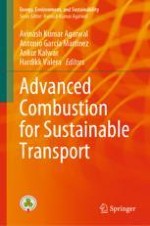This book is based on advanced combustion technologies currently employed in internal combustion engines. It discusses different strategies for improving conventional diesel combustion. The volume includes chapters on low-temperature combustion techniques of compression-ignition engines which results in significant reduction of NOx and soot emissions. The content also highlights newly evolved gasoline compression technology and optical techniques in advanced gasoline direct injection engines. the research and its outcomes presented here highlight advancements in combustion technologies, analysing various issues related to in-cylinder combustion, pollutant formation and alternative fuels. This book will be of interest to those in academia and industry involved in fuels, IC engines, engine combustion research.
